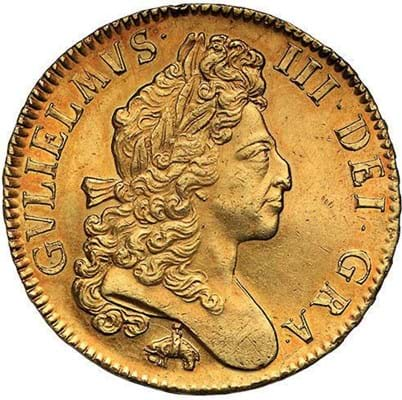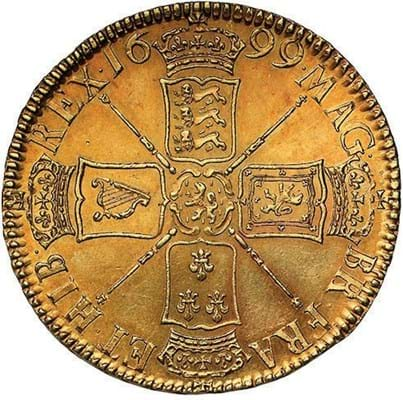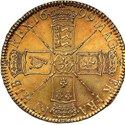The inaugural auction – a sale held in association with shareholder The Royal Mint – raised £2m from 613 lots of predominately British historic issues across all periods of coin production from the reign of Alfred the Great (871-99) to modern gold and silver proofs.
A succession of strong results were posted for gold Five Guineas pieces: some made ten-fold or more the prices they had fetched earlier this century.
Rare bullion mark
Among the rarest of all William III coins is the five guineas that includes, below a laureate bust, an elephant and castle motif – the badge of the African company that supplied gold bullion to make this coinage in 1699.
The very well-preserved example (above) last sold as part of a collection of five-guinea pieces at Morton & Eden in December 2003 for £8000. This time, estimated at up to £45,000, it sold at £155,000 (plus 20% premium).
A Charles II five guineas of 1675 with an elephant badge, sold in the same M&E sale 18 years ago for £8200, took an equally spectacular £130,000. A five guineas of 1677 with an elephant and castle below the bust brought £115,000.When last sold as part of the Samuel King collection at Spink in May 2005, it had made £14,500.
This was the first auction involving the Royal Mint which, as part of a five-year plan to grow its interest in the coin collecting market, took a share in Sovereign Rarities in June 2017.


















